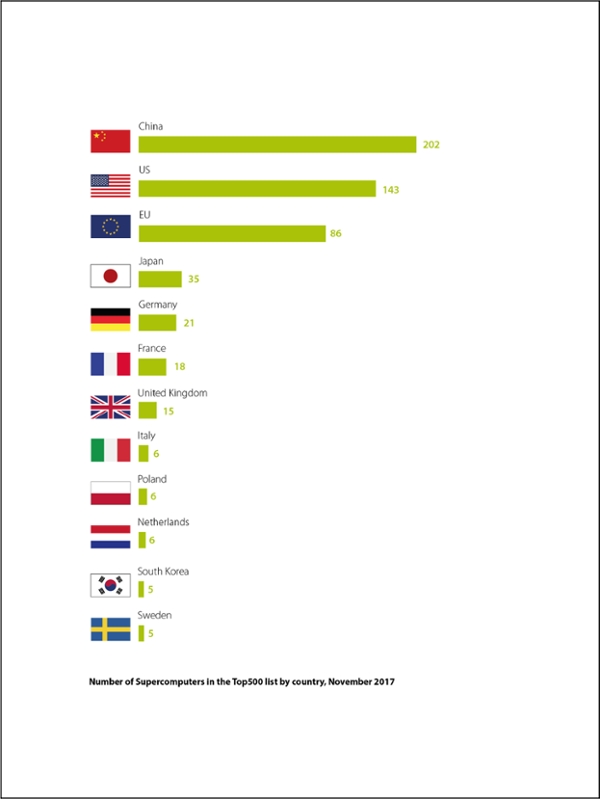- Report shows demand for supercomputing is rapidly increasing in key sectors of the European economy
- Europe’s supercomputing capacity and investments are lagging behind global competitors
- Public support is key to generate the economic and societal benefits and returns of supercomputing
Supercomputing or High Performance Computing (HPC) allows to design and simulate the effects of new drugs, provide faster diagnosis and better treatments, control epidemics and support better decision-making in many areas like electricity or water distribution or urban planning. The applications in technology and engineering are countless, from more energy-efficient buildings to better and safer cars and planes. Supercomputers will be indispensable for Europe’s digital transformation and any innovation in the future.
A new report prepared by the joint European Commission–European Investment Bank (EIB) InnovFin Advisory shows that the use of supercomputing for industrial and commercial applications in Europe has grown rapidly in recent years. The demand for supercomputing capabilities by European industries, smaller companies and researchers, however, by far exceeds the European supply of such resources. As a result, European innovators are using supercomputers outside the EU, which represents risks in terms of access, data protection, cybersecurity and data privacy.
“As the EU Bank, we understand both the unique opportunities and the challenging funding conditions supercomputing projects face in Europe,” said Werner Hoyer, President of the European Investment Bank. “For Europe to become world-class in this sector, the public and private sectors must work together. With our advisory services and financial tools such as InnovFin and the European Fund for Strategic Investment, we are well positioned to support the combination of private and public financing necessary to unlock the unprecedented opportunities offered by the next generation of supercomputers.”
For Europe to succeed in developing, the next generation of supercomputers and stay competitive, the report recommends stepping up European public support and financing in a coordinated way at a continental scale, as well as developing financial instruments to enable more private investments in this sector. In addition, new business models need to provide better access for smaller, innovative companies to supercomputing solutions.
Other countries have invested heavily in supercomputing infrastructure and capacity. China for example did not have a single supercomputer in 2001. Today it is leading in terms of performance and quantity, owning the highest number of top 500 supercomputers worldwide.
Number of Supercomputers in the Top500 list by country, November 2017

Financing for large-scale, high-performance computing facilities is challenging, due to the high upfront investment costs as well as the high level of uncertainty about revenues from these investments until the technology becomes more established and can be directly commercialised or applied by industry. The public sector can provide the necessary long-term and sustained financing. However, this is not sufficient to bridge the investment gap in supercomputing. The study therefore also recommends improving the coordination and pooling of support by the EU, member countries, regions and the private sector by developing new financing initiatives, based on a public-private-partnership approach for example.